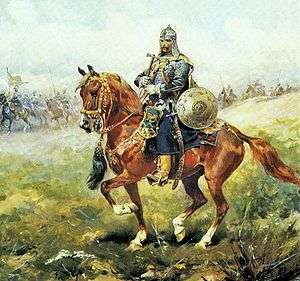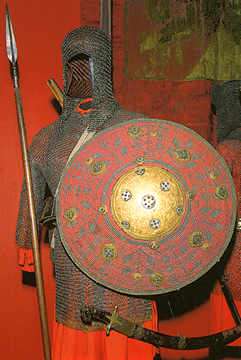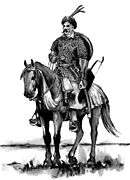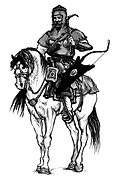Towarzysz pancerny

A Towarzysz pancerny (Polish: [tɔˈvaʐɨʂ panˈtsɛrnɨ], "mailed companion"; plural: towarzysze pancerni, or pancerni) was a medium-cavalryman in 16th to 18th century Poland, named for their chainmail armor ("pancerz"). These units were the second-most-important cavalry arm in the Polish army, after the hussars.
Most pancerni were recruited from the middle or lower classes or szlachta (nobility). They were organized into companies, with each company (Polish: chorągiew) consisting of 60 to 200 horsemen. They used chainmail or bechter armour to protect the upper body, karwasze sometimes with gauntlets, secretes (rarely Szyszak helmet), buckler shields, Polish szabla, reflex bow, gunpowder weapons, such as flintlock pistols, arquebus or muskets, and early carabines. Sometimes they used a nadziak, Rohatyna, or Kopia. During the rule of King John Third Sobieski, pole-arms became a necessity.
During Medieval times, under the rule of Mieszko I and Bolesław I Chrobry, pancerni were members of the prince's own force, and they alone in the whole army wore mail armor and used weapons such as arming swords, axes, spears, shields, and strait bows. They also wore nasal helmets.
In modern Polish, "pancerni" also means "tank men", as in the title of the book and TV series, Czterej pancerni i pies (Four Tank Men and a Dog). The word "pancerny" is seldom used in that context, however, with the common word being "czołgista" (from "czołg", "tank").



See also